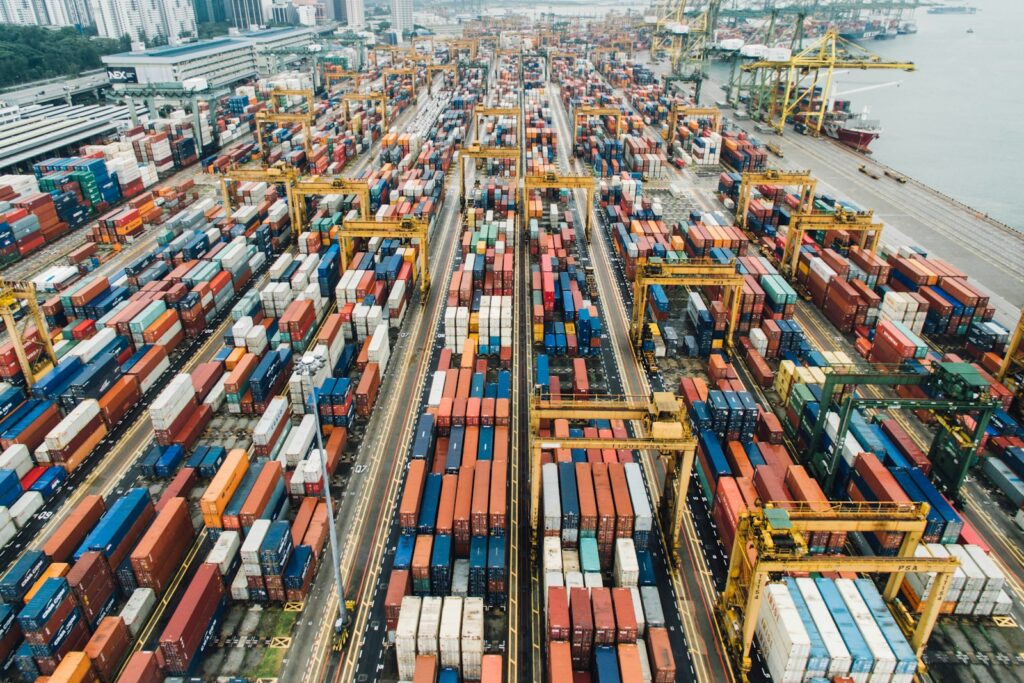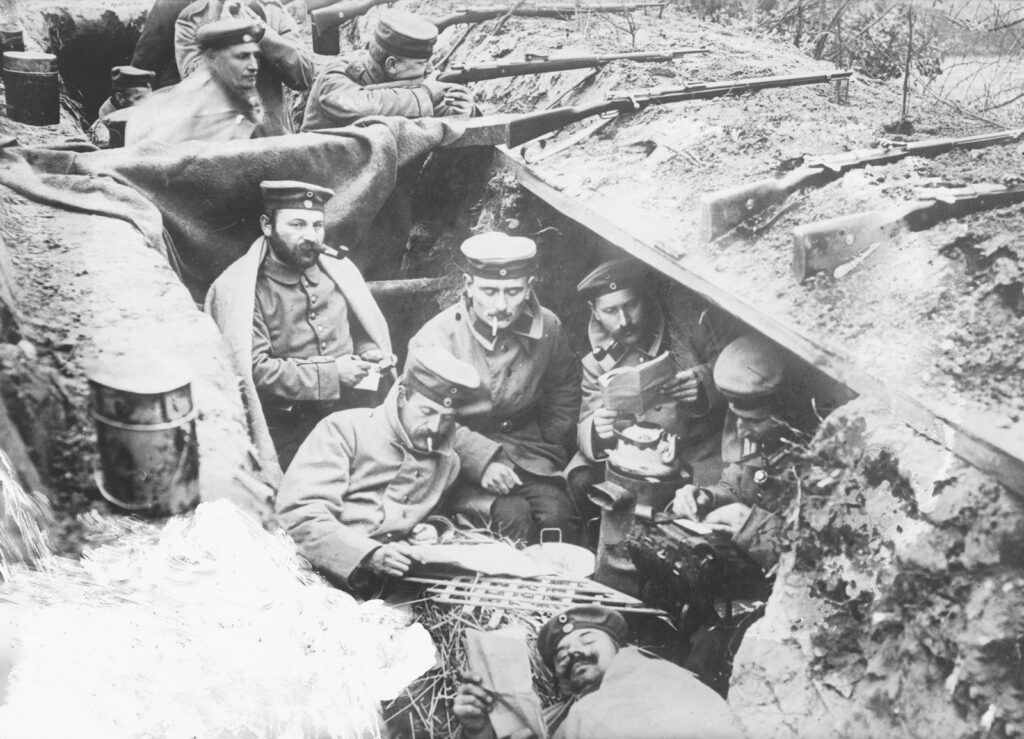
The 1970s, often retrospectively labeled as a “pivot of change” in world history, was a decade of unprecedented global upheaval, economic transformation, and profound social shifts. From political realignments and brutal conflicts to technological breakthroughs and societal re-evaluations, the years between 1970 and 1979 were anything but static. For the world of international trade and commerce, this turbulent period presented a complex “riddle”: why did so many vital imports simply stop arriving at ports of entry, altering economies and daily lives across the globe?
This wasn’t merely a matter of shifting tastes or minor logistical hiccups; it was a systemic disruption rooted in a confluence of powerful forces that reshaped the global landscape. The interconnectedness of economies, which had begun to solidify after World War II, was severely tested by events that reverberated from Washington D.C. to Phnom Penh, and from the oil fields of the Middle East to the factories of East Germany. Understanding this riddle requires a deep dive into the specific catalysts that made the ’70s such a challenging time for global supply chains.
Indeed, the global experience of the cultural transition of the 1970s and an experience of a global zeitgeist “revealed the interdependence of economies since World War II, in a world increasingly polarized between the United States and the Soviet Union.” This awareness only sharpened as unforeseen circumstances continuously disrupted established patterns of commerce. Let’s embark on a detailed exploration of the foundational disruptions of the 1970s, unraveling how these significant shifts led to the unexpected cessation of crucial imports and fundamentally redefined the mechanisms of global commerce. These events, far from being isolated incidents, were threads in a vast tapestry of change, each contributing to the mysterious disappearance of goods from international docks and warehouses.

1. **The 1973 Oil Crisis and OPEC Embargoes**Perhaps no single event underscored the interdependence of global economies and the fragility of supply chains more dramatically than the 1973 oil crisis. Caused primarily by oil embargoes imposed by the Organization of Arab Petroleum Exporting Countries (OPEC), this crisis sent shockwaves throughout the developed world, triggering an economic recession. Crude oil prices skyrocketed, impacting manufacturing and transportation expenses. This made many imported goods prohibitively expensive or impossible to transport efficiently.
The sudden restriction of oil supply was a direct response to the Yom Kippur War, which saw Egypt and Syria declare war on Israel. As the context states, “the 1973 oil crisis causes a financial crisis throughout the developed world.” Oil is a fundamental input for countless industries; its scarcity or exorbitant price meant production across various sectors faltered dramatically. Factories struggled, goods became unaffordable to manufacture, and international shipping costs soared.
For countries heavily reliant on oil imports, the embargoes created an immediate and profound supply shock. Industries dependent on affordable energy found their pipelines drying up, leading to reduced production, widespread layoffs, and a sharp decline in export capacity. Even with domestic demand, economic strain meant fewer resources were available for other goods.
Consequently, the flow of goods *into* importing nations was severely curtailed. The very engine of global trade – cheap energy – had seized up. This economic earthquake fundamentally altered trade relationships and exposed deep vulnerabilities in the global energy market. Its pervasive impact directly caused many import streams to dry up, leaving a lasting mark on international commerce.
Read more about: How Well Do YOU Remember the ’70s? Answer These Real ‘Jeopardy’ Moments to Find Out!

2. **The End of the Postwar Economic Boom and Rise of Stagflation**The 1970s marked a decisive end to the robust postwar economic boom that had characterized the preceding decades, heralding a new era of global economic uncertainty. Historians increasingly portray the 1970s as a “pivot of change” in world history, “focusing especially on the economic upheavals that followed the end of the postwar economic boom.” This transition ushered in unprecedented economic challenges, most notably “stagflation”—a toxic combination of economic stagnation, high unemployment, and rampant inflation. This new economic reality profoundly impacted consumer demand, production, and import viability.
Industrialized countries experienced an economic recession, exacerbated by the oil crisis and structural issues. As the context notes, “The crisis saw the first instance of stagflation which began a political and economic trend of the replacement of Keynesian economic theory with neoliberal economic theory.” Domestic economies struggled, purchasing power was eroded by inflation, and businesses faced declining profits alongside rising costs. In such an environment, demand for non-essential imports dwindled significantly.
Even essential goods faced barriers due to increased production costs in exporting countries and reduced consumer affordability in importing ones. When wages didn’t keep pace with inflation and jobs were scarce, households tightened their belts. This made imported luxuries or even moderately priced foreign goods unattainable. Governments, grappling with persistent deficits and stagflation, often introduced protectionist measures or currency devaluations, further complicating international trade.
The shift from Keynesian to neoliberal economic theory also signaled a profound change in how governments managed economies. This widespread economic malaise meant many nations lacked the economic vitality or currency strength to sustain previous import levels. The ’70s riddle, therefore, was partly a reflection of internal economic weaknesses and shifting policy paradigms that reduced a nation’s capacity and desire to bring in goods from abroad, effectively shutting down many traditional import avenues.
Read more about: The ’70s Unplugged: Unveiling the 14 Pivotal Global Events That Reshaped a Decade

3. **Intensified Cold War Geopolitical Rivalry and Proxy Conflicts**Despite initial attempts at “détente,” the 1970s were still very much defined by the underlying geopolitical rivalry between capitalist and communist forces. The context clearly illustrates this global divide, depicting “The world map of military alliances in 1970s: Western allies (blue), Non-aligned countries (green) and Soviet allies (red).” This constant jockeying for influence played out in numerous proxy conflicts and political maneuvering that directly interfered with international trade networks.
The context states that “The US–Soviet geopolitical rivalry nonetheless continued through the decade, although in a more indirect faction as the two superpowers jockeyed relentlessly for control of smaller countries.” This intense competition meant that American and Soviet intelligence agencies were actively involved, giving “funding, training, and material support to insurgent groups, governments, and armies across the globe,” each aiming to gain geopolitical advantage. This environment invariably led to trade embargoes, political sanctions, and disruptions of traditional trade routes as nations were often compelled to align or realign themselves with one of the two major blocs.
For many countries caught in the geopolitical crosshairs, trade became a tool, or even a weapon. Access to crucial markets or specific goods could be granted or severely curtailed based on political allegiance, leading to abrupt cessation of imports from certain regions or traditional suppliers. Furthermore, the instability generated by these proxy wars often made shipping and commerce in affected regions incredibly hazardous, driving up insurance costs or making trade impossible due to risk. The Cold War continued to cast a long and disruptive shadow over the free flow of goods, acting as a major impedance for global imports.
Read more about: Strategic Foundations: Understanding the U.S. Military’s Global Power and Operational Framework

4. **The Vietnam War’s Conclusion and Regional Instability**The Vietnam War concluded in 1975 with the fall of Saigon and the unconditional surrender of South Vietnam on April 30, 1975. The United States had withdrawn its military forces from the war in 1973. While the official end of direct combat might suggest a return to normalcy, its immediate aftermath, coupled with existing regional tensions, generated profound instability across Southeast Asia and had significant ripple effects on global trade.
The reunification of Vietnam in 1976 and the subsequent rise of radical communist regimes, most notably the Khmer Rouge in Cambodia, drastically reshaped the economic and political landscape. The Cambodian Civil War, ending with the Khmer Rouge establishing Democratic Kampuchea in 1975, led to widespread atrocities and a complete shutdown of traditional commerce. As the context explicitly states, “His communist government, the Khmer Rouge, forced people out of the cities to clear jungles and establish a radical, Marxist agrarian society.” This internally focused agenda effectively halted any meaningful international trade, cutting off Cambodia as both a source of exports and a market for imports.
Beyond Cambodia’s internal devastation, broader geopolitical shifts in Southeast Asia led to new alliances and antagonisms. The Cambodian–Vietnamese War (1978–1991) and a brief border war with China in February 1979 demonstrated regional peace fragility. These conflicts, combined with the lingering effects of decades of warfare, meant critical infrastructure was destroyed, nascent economies shattered, and political uncertainties made stable supply lines precarious. The Vietnam War’s conclusion, therefore, initiated a complex and violent phase of regional reordering that significantly disrupted established import and export channels, leading to the abrupt disappearance of many once-common imports.
Read more about: The ’70s Unplugged: Unveiling the 14 Pivotal Global Events That Reshaped a Decade

5. **The Iranian Revolution of 1979 and Energy Market Volatility**As the decade drew to a close, the Iranian Revolution of 1979 introduced another seismic shift that profoundly altered global politics and, crucially, the energy market. This revolution dramatically transformed Iran “from an autocratic pro-Western monarchy under Shah Mohammad Reza Pahlavi to a theocratic Islamist government under the leadership of Ayatollah Ruhollah Khomeini.” The immediate aftermath was characterized by intense distrust between the new revolutionary government and Western powers, culminating in the Iran hostage crisis on November 4, 1979.
Iran, a major oil producer, found its output severely disrupted by internal turmoil and its geopolitical alignment inverted. The revolution directly contributed to the 1979 energy crisis, marking a second period of significant instability for global oil supplies within the decade. The fundamental shift from a pro-Western regime to an anti-Western theocracy had immediate and severe consequences for international trade, particularly for nations heavily reliant on Iranian oil. Exports from Iran plummeted, and imports became fraught with political complexity, security risks, and international sanctions.
The hostage crisis, in particular, escalated tensions, making normal diplomatic and commercial relations with Iran virtually impossible for many Western nations. This sudden withdrawal of a major player from the global trade network, coupled with renewed anxieties over energy security and geopolitical stability in the Middle East, created significant ripples worldwide. Energy-intensive industries globally felt the squeeze, leading to production slowdowns and higher prices, which in turn made many imports less viable. The Iranian Revolution was a stark reminder that profound political upheavals could have immediate and far-reaching global economic repercussions, leading to the abrupt cessation of vital imports.
Read more about: The ’70s Unplugged: Unveiling the 14 Pivotal Global Events That Reshaped a Decade

6. **Waves of Decolonization and Post-Independence Conflicts**The 1970s witnessed further waves of decolonization, particularly in Africa, as former colonial powers, notably Portugal and Spain, relinquished territories. Angola and Mozambique, for instance, gained their independence in 1975 from the Portuguese Empire. Spain withdrew its claim over Spanish Sahara in 1976, marking the formal end of the Spanish Empire. While independence was a momentous triumph, the transition was often fraught with severe challenges, leading to widespread instability that severely hampered international trade.
As the context highlights, “The continent was, however, plagued by endemic military coups, with the long-reigning Emperor of Ethiopia Haile Selassie being removed, civil wars and famine.” The power vacuums created by colonial withdrawal frequently led to intense internal conflicts, as various factions vied for control, often with external superpower support. The Angolan Civil War (1975–2002), for example, became a proxy battlefield. Such prolonged conflicts devastated fledgling infrastructures, displaced populations, disrupted production, and made any form of stable, predictable commerce nearly impossible.
For nations attempting to trade with these newly independent or conflict-ridden states, the practical difficulties were immense. Ports might be controlled by opposing factions, crucial roads rendered impassable, and nascent bureaucratic structures non-existent or corrupt. Production of exportable goods often ceased entirely due to warfare, meaning there was nothing to ship out and, consequently, nothing to import. This period demonstrated how political liberation, while necessary, could paradoxically lead to immediate economic isolation and the abrupt cessation of traditional import streams.
Read more about: Beyond the Disco: Unearthing the Pivotal Events and Enduring Legacies That Shaped the 1970s

7. **Proliferation of Coups D’état and Political Instability**The 1970s were characterized by an alarming frequency of coups d’état across the globe, indicating pervasive political instability that profoundly disrupted national economies and international trade relations. From the 1970 coup in Syria to the 1979 coup in El Salvador, numerous governments were overthrown by military forces or rebel groups. Each coup, as outlined in the context, had immediate and often devastating effects on a country’s internal order and its fundamental ability to participate reliably in global commerce.
Prominent examples include the 1971 military coup in Uganda led by Idi Amin; the 1973 coup d’état in Chile, bringing Augusto Pinochet to power; and the 1974 military coup in Ethiopia, ending one of the world’s longest-lasting monarchies. These sudden, often violent changes in leadership created profound uncertainty in international markets.
When a government was abruptly overthrown, existing trade agreements could be nullified, foreign assets seized, or new, restrictive economic policies implemented. This environment of acute uncertainty and frequent political rupture made international investors hesitant and deterred foreign suppliers from sending goods to unstable regions. Fears of non-payment, confiscation, or market collapse were significant risks. The constant threat and execution of coups meant that for many countries, the flow of imports could be abruptly halted, as basic political stability, a prerequisite for reliable trade, was frequently absent throughout this turbulent decade. This widespread instability was a core component of the ’70s riddle, leaving many ports of entry unusually quiet.
The 1970s, a decade synonymous with transformation, introduced a complex web of specific events and evolving trends that further compounded challenges for international trade. Beyond broad geopolitical and economic shifts, a series of more localized yet globally impactful phenomena contributed to the baffling cessation of imports. These additional layers of disruption — from the chilling rise of global terrorism to the quiet, structural economic woes of certain nations and the dizzying pace of technological change — offer further pieces to our ’70s riddle, revealing how multifaceted the decade’s challenges truly were for global commerce.
Let’s continue our deep dive into these intricate forces that left many ports unvisited and many shelves bare, understanding how each played its unique part in rewriting the rules of international supply and demand. This interplay paints a comprehensive picture of a decade where predictability gave way to constant flux, forcing nations and industries to adapt or face isolation.
Read more about: The ’70s Unplugged: Unveiling the 14 Pivotal Global Events That Reshaped a Decade

8. **The Chilling Rise of Global Terrorism**The 1970s saw a troubling escalation in global terrorism, transforming it into a direct impediment to international trade and safe passage of goods. Militant organizations across the world increased their use of terrorism, creating profound uncertainty and heightened risk for cross-border commerce. Threats against transportation infrastructure, personnel, and cargo became a tangible and costly factor in global logistics.
Devastating acts underscored this new reality. “Skyjack Sunday” on September 6, 1970, saw Palestinian terrorists hijack four airliners, complicating international freight and passenger movement. The Munich massacre at the 1972 Summer Olympics, where the Black September organization kidnapped and murdered eleven Israeli athletes, sent global shockwaves, emphasizing that international events and travel were no longer immune.
This climate of fear and insecurity had immediate, practical implications for import flows. Shipping companies faced escalating insurance premiums, making imports economically unviable. Increased security measures at ports, airports, and border crossings also led to significant delays and added operational expenses. For goods from regions affected by active terrorist groups, like Europe’s Red Brigades and Baader-Meinhof Gang, or areas with persistent violence, risks were too high. This often caused suppliers to withdraw, and traditional import channels to dry up. The direct economic and logistical fallout from global terrorism undeniably contributed to the ’70s riddle of disappearing imports.
Read more about: The ’70s Unplugged: Unveiling the 14 Pivotal Global Events That Reshaped a Decade

9. **Devastating Natural and Non-Natural Disasters**Beyond man-made conflicts, the 1970s were tragically defined by a succession of catastrophic natural and non-natural disasters that dealt severe blows to global infrastructure, production, and supply chains. These events, often sudden and overwhelming, had an immediate and profound impact on the flow of goods, causing imports to cease as exporting regions were crippled or importing nations diverted all resources to recovery. The sheer scale of these tragedies underscores the fragility of global commerce.
Natural phenomena delivered devastating blows. The 1970 Bhola cyclone, for instance, remains the deadliest tropical cyclone in world history, killing an estimated 500,000 people in East Pakistan (now Bangladesh) and decimating the Ganges Delta region. Such an event would destroy local production, critical port facilities, and transportation networks, effectively isolating the region from international trade. Other earthquakes, like the 1970 Ancash earthquake in Peru or the 1976 Tangshan earthquake in China that killed nearly a quarter-million people, similarly eradicated economic activity and the ability to engage in imports or exports.
Adding to these natural devastations was a disturbing series of large-scale non-natural disasters, particularly in aviation and shipping, demonstrating transportation vulnerabilities. The 1977 Tenerife airport collision, where two Boeing 747s collided, killing 583 people, stands as the worst aviation disaster on record. While individual incidents had local impacts, their cumulative effect on international freight and passenger confidence was significant. Lost cargo, heightened safety regulations, increased transport costs, and a general wariness could delay or deter shipping. Collectively, these catastrophes frequently severed the physical links of global trade, causing goods to literally stop arriving as the means of transport or the destinations themselves were destroyed or rendered inaccessible.
Read more about: The ’70s Unplugged: Unveiling the 14 Pivotal Global Events That Reshaped a Decade
10. **The Evolving International Role of China**For much of the post-World War II era, the People’s Republic of China largely remained outside mainstream global commerce, particularly with Western nations. However, the 1970s marked a pivotal turning point, fundamentally reshaping China’s international relations and global trade dynamics. This evolving role, initiated by significant diplomatic shifts and internal political transitions, altered traditional trade patterns and created new complexities for existing import streams.
A key moment arrived in 1971 when the United Nations recognized the People’s Republic of China, expelling Taiwan’s representatives. This diplomatic re-alignment signaled China’s emergence onto the world stage. Subsequent groundbreaking visits by Henry Kissinger in 1971 and U.S. President Richard Nixon in 1972 began restoring relations, thawing decades of frozen diplomatic and commercial ties. This strategic move, partly a counterweight against Soviet expansionism, undeniably influenced global trade alignments.
While formal diplomatic ties with the U.S. were not established until 1979, internal shifts within China laid the groundwork for its future economic trajectory. The deaths of Mao Zedong and Zhou Enlai in 1976 marked the end of the Cultural Revolution, ushering in a new era. Deng Xiaoping’s ascent initiated a gradual but profound shift towards market economics. This meant a global re-evaluation of trade relationships. Countries reliant on goods from “old” China (Taiwan) might have found those streams disrupted as diplomatic recognition and trade allegiances shifted, causing the cessation of certain imports from previous partners as new trade pathways with mainland China began to be explored.
Read more about: The Fifties Unpacked: An Expert’s Guide to the Defining Cultural, Social, and Global Shifts of a Transformative Decade

11. **The Soviet Invasion of Afghanistan**As the 1970s drew to a close, a dramatic geopolitical event shattered the fragile policy of “détente” that had characterized U.S.-Soviet relations: the Soviet invasion of Afghanistan on December 27, 1979. While the Soviet-Afghan War largely unfolded in the 1980s, its commencement in the final days of the ’70s had immediate and profound repercussions for global politics and, crucially, international trade, causing a swift cessation of certain imports and a redirection of economic policy.
The invasion abruptly ended the period of lessening tensions between the superpowers. Détente, which had promoted resolution at the negotiating table, gave way to renewed Cold War hostilities. This immediate shift instigated a wave of international condemnation and, notably, a series of economic sanctions against the Soviet Union by Western nations. These sanctions directly targeted Soviet imports and exports, aiming to exert economic pressure and isolate the aggressor.
For countries directly involved in or supportive of the Soviet Union, trade flows were complicated by the renewed ideological divide and sanctions. Conversely, nations previously engaged in commerce with the Soviet bloc for raw materials or industrial goods found those import streams suddenly curtailed or made politically unfeasible. The Soviet invasion thus acted as a stark geopolitical disruptor, effectively causing particular imports to stop arriving at ports due to political decree, economic pressure, and the re-escalation of a global ideological struggle.
Read more about: The ’70s Unplugged: Unveiling the 14 Pivotal Global Events That Reshaped a Decade

12. **Internal Political Tensions within Various Nations**Beyond overt wars and coups, many nations in the 1970s grappled with severe internal political tensions, ranging from separatist movements to authoritarian crackdowns, all stifling their ability to engage in stable international trade. This internal turbulence often disrupted domestic production, created unpredictable market conditions, and deterred foreign suppliers, directly contributing to the ’70s riddle of disappearing imports.
Consider Yugoslavia’s growing internal tensions. The Croatian Spring movement in 1971, demanding greater decentralization, was subdued, but it sowed seeds of ethnic tensions. Such periods of political suppression created an uncertain environment for economic planning and investor confidence. Similarly, Quebec’s rise of separatism, highlighted by the FLQ’s October Crisis in 1970 and the election of a Parti Québécois government, introduced national uncertainty. Martial law in the Philippines (1972) and the Indian emergency (1975-1977) represented periods of intense government control and repression that severely impacted normal economic activity.
In these unstable environments, national resources often shifted from fostering international trade to maintaining internal order or addressing socio-political grievances. Businesses struggled with unpredictable policy changes, potential asset seizures, or disruptions to labor and supply. Foreign exporters, wary of political risk or market collapse, became increasingly hesitant to ship goods to these turbulent countries. This translated directly into a reduction or complete cessation of imports, as internal strife effectively closed off a nation from reliable global commerce.
Read more about: The ’70s Unplugged: Unveiling the 14 Pivotal Global Events That Reshaped a Decade

13. **Unique Economic Struggles Experienced by States like East Germany**While the West grappled with stagflation, command economies within the Soviet bloc faced their own distinct and often chronic economic struggles during the 1970s. These internal structural weaknesses and political isolationist policies directly suppressed demand for, and the ability to acquire, imports, contributing to the “riddle” from a different angle. For nations like East Germany, the problem wasn’t necessarily that global supply chains broke down, but that their internal economic mechanisms simply couldn’t sustain a diverse flow of foreign goods.
East Germany, under Erich Honecker’s leadership, exemplifies this challenge. The mid-1970s were a period of extreme recession for the country, exacerbated by high debts. The context explicitly notes that “consumer goods became more and more scarce. If East Germans had enough money to procure a television set, a telephone, or a Trabant automobile, they were placed on waiting lists which caused them to wait as much as a decade for the item in question.” This wasn’t merely a delay; it was a systemic failure to provide even basic consumer imports. Limited hard currency reserves were often prioritized for strategic industrial goods, leaving little for consumer imports.
Similarly, the Soviet Union itself experienced a “period of stagnation.” Its planned economy suffered from “hidden inflation” and “production consistently fell short of demand in agriculture and consumer goods manufacturing.” These internal shortfalls meant that the Soviet Union and its satellite states, rather than being robust importers of diverse foreign goods, were often struggling to meet their own domestic needs. For these states, the “stopping” of imports was less about external forces severing supply lines and more about internal economic policies, lack of purchasing power, and ideological choices that intentionally or unintentionally curtailed the arrival of foreign goods.
Read more about: Gear Grinders and Road Rogues: Unmasking the 1970s’ Most Hated Cars That Still Haunt Our Automotive Dreams

14. **Major Technological Shifts**The 1970s was an era of profound technological and scientific advances, laying the groundwork for the digital revolution. While seemingly a positive development, these shifts contributed to the ’70s riddle in a unique way: by rendering older technologies obsolete and transforming the very nature of what was considered an “import,” effectively causing certain traditional goods to stop arriving at ports. It was less about a disruption of supply and and more about a fundamental change in demand and production paradigms.
The decade saw the appearance of the first commercial microprocessor, the Intel 4004, in 1971. This invention catalyzed a “profound transformation of computing units – by then rudimentary, spacious machines – into the realm of portability and home accessibility.” This meant that massive, room-sized mainframe computers, which might have been imported as complete units in previous decades, began to be replaced by smaller, more modular components. As technology advanced rapidly, the demand for older generations of computing hardware as finished imports would have dwindled, giving way to an entirely new category of specialized components, microprocessors, and circuit boards.
Furthermore, advancements in fields like physics reflected a broader scientific and industrial progression that drove innovation across various sectors. For global trade, this meant a constant re-evaluation of product lines. Factories previously importing components for outdated machinery would suddenly find themselves needing entirely different, more advanced parts or even new manufacturing systems. The “riddle” here is that certain imports ceased because they were no longer relevant or required in a rapidly advancing technological landscape, replaced by newer, often domestically produced, or differently sourced technological goods. This evolution was not a crisis, but rather a re-calibration that effectively retired old import streams in favor of the new.
**An Ending Paragraph of the Article**
Read more about: Beyond the Hype: The 10 Most Dependable Hatchbacks That Will Outlast Your Expectations
The ’70s riddle, therefore, was not a singular puzzle but a complex tapestry woven from economic crises, geopolitical chess matches, violent upheavals, devastating calamities, and the quiet, relentless march of progress. Each factor we’ve explored, from the foundational oil shocks to the subtle shifts in technological demand, played a distinct role in interrupting the seamless flow of goods that the post-war world had come to expect. It was a decade that profoundly revealed the intricate interdependence of economies and the myriad ways external and internal forces can conspire to alter global commerce. Understanding these multifaceted disruptions offers us not just a historical perspective, but crucial lessons on the fragility and resilience required to navigate the ever-changing tides of international trade. The echoes of the ’70s riddle continue to inform our strategies for building more robust and adaptable supply chains in a world still defined by unforeseen challenges.




